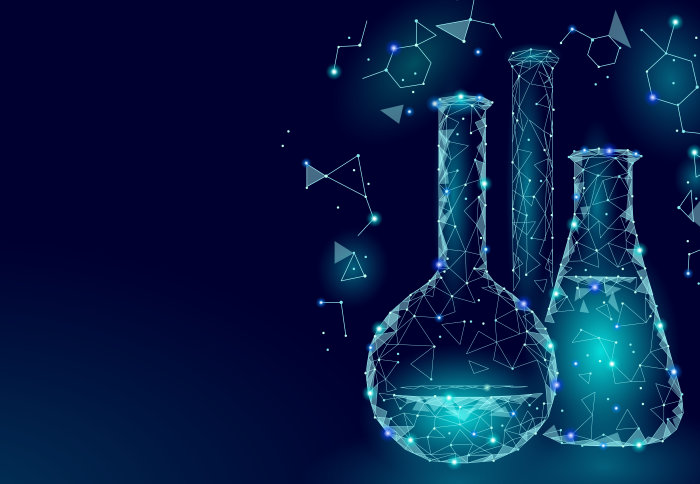

Philip Howard, former Imperial relationship manager at BP and current MSc Sci Comms student, turns his attention to the digitisation of chemistry
By Philip Howard
“Anybody in the chemical industry without digitisation is going to be left behind,” announces Professor Alexei Lapkin, Professor of Sustainable Reaction Engineering at the University of Cambridge. He continues, describing how with access to data on millions of individual reactions and to the latest supercomputers we can now ask very different questions in order to find new products and to commercialise technology faster and cheaper. He says digitisation is about developing the right tools of “automated experimental equipment and the ability to analyse the data.” Lapkin’s credentials are clear, with a large chemical company currently exploiting his group’s methods in a ‘live’ project on a target for manufacture.
Professor Lee Cronin, Regius Professor of Chemistry at the University of Glasgow, suggests widespread digitalisation still has its challenges however. He says that chemists are very conservative, partly because, until recently, the “technology has not been mature enough to digitise chemistry.” Alongside his research, Cronin is founder of the company DeepMatter, which envisions “liberating chemists” by turning chemistry into code. He anticipates that this approach will lead to widespread chemical-computers or ‘chemputers’ - robots that run chemical code to make molecules. He says “we should let chemputers do known chemistry automatically, allowing the chemist to develop the new routes helped by discovery machines powered by machine learning.”
Not content with just automating the chemical process, Cronin has pioneered the development of accessible 3D printed reactionware too. The two together produce a kind of portable chemistry set that allow individuals to remotely replicate materials and pharmaceuticals from a pre-set code. Cronin’s lab have already built several systems. With it they recently synthesised a pharmaceutical by turning a traditional laboratory synthesis into a piece of digital code. With the code the equipment was 3-D printed outside of a lab and then operated to produce the drug in a quantity which could match a local need. And this means synthesis can be done, says Professor Cronin, with a “good practical technician” delivering the same result time after time.
Whilst Cronin’s group have made the conceptual leap in to a real operating system, he acknowledges that “we need to change the culture by being more collaborative” to develop and spread these technologies.
This is where the new Centre for Rapid On-Line Analysis of Reactions (ROAR) comes in. The result of a successful EPSRC strategic equipment application, it is based at Imperial’s White City Campus with Professor Mimi Hii at its helm. Hii is Professor of Chemistry at Imperial College London and co-leader of the Dial-a-Molecule network. The Dial-a-Molecule network was established in 2010 as one of EPSRC’s “Physical Science Grand Challenges” and brings together academics, such as Lapkin and Cronin, industrial chemists and chemical engineers from across the UK to investigate new ways of delivering molecules more quickly and efficiently.
Traditionally chemistry is seen as “a suck it and see discipline” according to Hii. “Chemistry is still not as predictive as other sciences…we need to change the way we do it,” she says emphatically. Hii explains that chemistry needs to learn from the many “wonderful advances in techniques in biology” in high-throughput experimentation and the “advances in data science” if it wants to develop at a comparable rate. At Imperial they will be offering and developing a whole range of robotic and automated analytical systems, including testing one of Cronin’s chemputers. The AI methods required to operate these systems will be developed in tandem.
Being nationally funded, the facility will be open to all, to make the UK a leader in the molecular sciences. In time, Hii also hopes that the data gathered and generated by ROAR will be collated and made openly accessible on a ‘National Reaction Database’. This will provide the chemistry community with a valuable resource for developing more reliable algorithms and more reproducible synthetic protocols.
But the exciting opportunities and big challenges for chemistry are not just in the design of the equipment or in the speed of the computers. It is in the training and education of the chemists and engineers. As Cronin says, we need to “train chemistry PhD students in programming…and get chemists more comfortable with code.” And both Hii and Lapkin agree. For Professor Lapkin it is about “doing the maths” to “set up algorithms to “feed” the robots” and “developing the language the robots can understand.” An important role of the centre will be in educating chemists in data science, a dramatic departure from the discipline's traditional skillset.
With these new-found skills and equipment, the role of the 21st century data scientist trained chemist will not be diminished. They will be released from the drudgery of trying to repeat someone else’s poorly documented synthesis. The digital chemist will now be able to think more in depth about chemistry. These more reflective thought experiments will allow additional avenues of investigation to open up in academia and industry with more of the astounding results Lapkin, Cronin and Hii have already seen.
But this leaves the question of what those who are left behind will be doing? Well, there will always be the test-tubes to wash.
Article text (excluding photos or graphics) © Imperial College London.
Photos and graphics subject to third party copyright used with permission or © Imperial College London.




